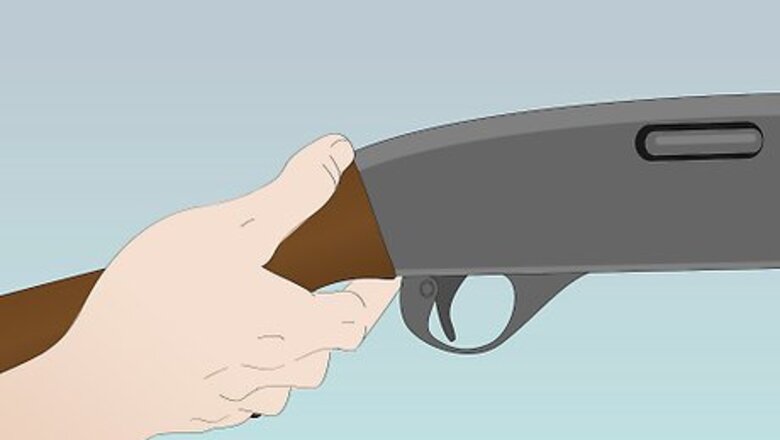
views
Placing Your Hands
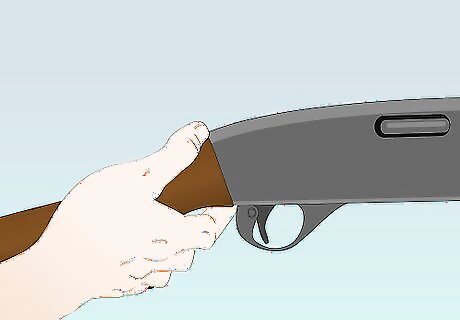
Place the palm of your trigger hand along the side of the stock wrist. The stock wrist is the narrowest part of the back end of the gun. Your palm should be placed at this narrow wrist to help steady the gun from the back end. When pointing the gun, this hand is going to come up to the level of your cheek to put your eye in line with the barrel, so it’s important to get a good, comfortable grip. Your hand should feel like it’s almost shaking hands with the trigger grip—a firm handshake that’s not too loose and not too tight.
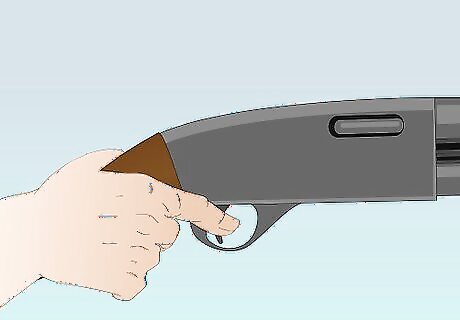
Rest your index finger on the trigger and wrap the remaining fingers. Put the fleshy part of your pointer finger on the trigger and wrap your thumb and remaining three fingers around the smallest part of the stock (also known as the “wrist”). Some stock wrists are thicker than others, so when you’re shopping for a gun, make sure you have a comfortable grip and can easily reach the trigger and the safety.

Grip the fore-end of the gun with your other hand. Your front hand is going to allow you to move the gun around in an arc for aiming and help you cradle the weight of the gun. Place the fore-end on top of your open palm and wrap your fingers around it with a firm grip. The fore-end should lie a little diagonally across your palm so your pointer finger is in line with the barrel. Use a firm grip, not too loose or too tight. Extending your index finger and aligning it with the barrel of the gun will make pointing feel more natural (as if you’re just pointing your finger at the target). Make sure your fingers do not touch the barrel because it can get hot after firing.
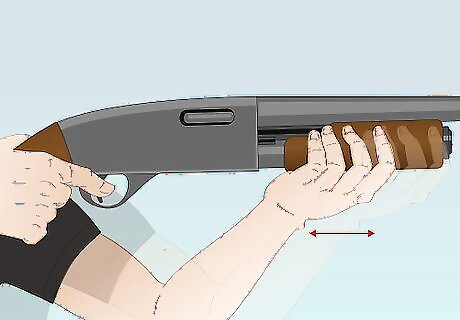
Adjust your forward hand to grip the fore-end at a natural distance. It’s important that you’re not stretching or scrunching your arm to try to grip the shotgun. Keep your elbow loose and relaxed and adjust your grip farther or closer away from your body to a distance that feels natural. Gripping the gun closer to the trigger will allow you to swing your aim faster while a wider grip allows you to steady the gun with more control and temper the recoil.
Shouldering the Shotgun
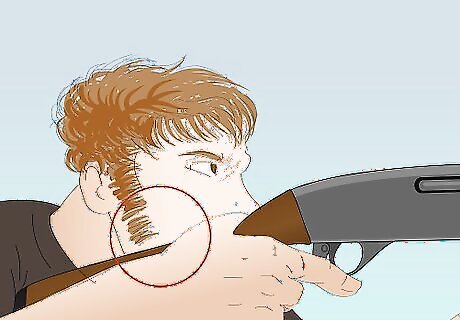
Lift the stock up to your cheek. Let the stock (or “comb”) of the gun lightly touch the ridge below your cheekbone to keep your eyes in line with the barrel. You'll need to raise your shoulders a little bit to avoid craning your neck down and causing strain.
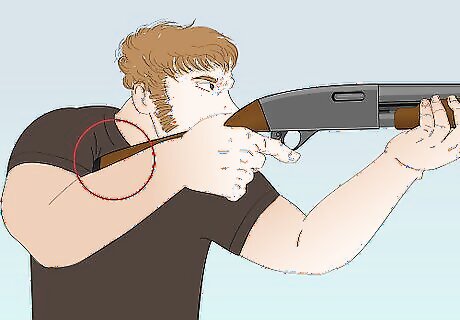
Wedge the butt of the gun into your shoulder pocket. The flat backend of the gun (the "butt") needs to be stationed in the space between your shoulder and pectoral muscles. Hold it tight against your shoulder (almost like an extension of your arm) to keep the gun steady during recoil. The bottom of the butt plate should rest in line with or at the top of the shoulder. When shouldered correctly, the butt will barely move during recoil. Avoid wedging the butt into your armpit, as that will only make you have to crane your neck down to put your eyes in line with the barrel. It will also make your shoulder extremely sore after a day of shooting practice!

Keep your head naturally erect. It’s important to hold your neck and head in a comfortable position to get a good aim and avoid injury or post-shooting soreness. Your neck should be comfortably positioned, not craned down or to the side to look into the sight. Raise your shoulders a little to bring the stock up to the side of your cheek and avoid lowering your head to keep your eye in line with the barrel. Hold your neck slightly forward but not enough to cause strain.
Assuming the Stance
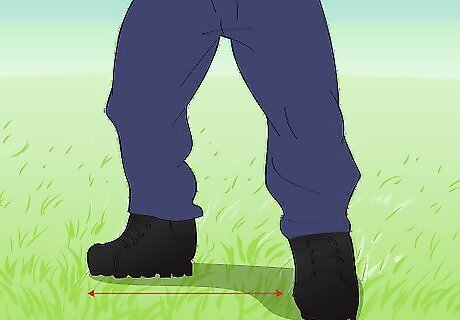
Stand with your feet shoulder-width apart and slightly bend your knees. Shotguns are shot from a standing position, but you’ll want to have good balance to move the gun in a wide arc and steady yourself for the kickback. Place your feet about shoulder-width apart and bend your knees a little so you have a good center of balance.
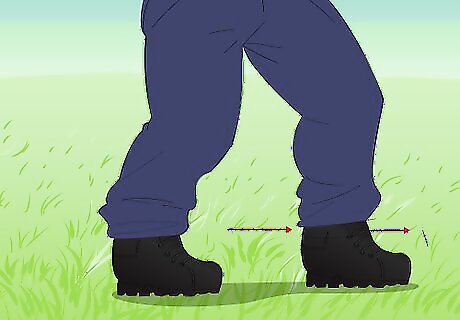
Plant one foot slightly forward and lean into it a little. If you’re a right-handed shooter, you’ll want to put your left foot a little forward and lean just slightly into it (and vice-versa if you shoot with your left hand). When your right foot is forward, point your toes about 45 degrees to the right of the target. If your left foot is forward, your toes will point 45 degrees to the left of the target. Lean so that about 60% of your weight is on your front foot. Remember to keep your back leg slightly bent because it’s going to support your hips’ ability to pivot left and right as needed.
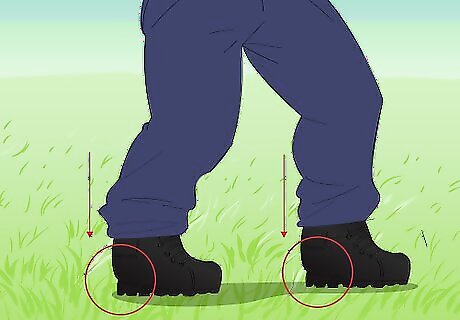
Put your weight on the balls of your feet. Keep your whole foot planted on the ground and transfer most of your weight onto the balls of your feet to help you lean into the gun and stay balanced. This will also help you pivot and move around quickly to meet moving targets. Avoid putting weight on your heels because you won’t be able to pivot as quickly and might lose your balance on the recoil.














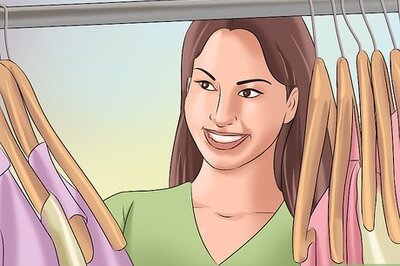



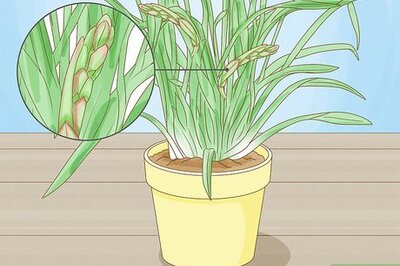

Comments
0 comment